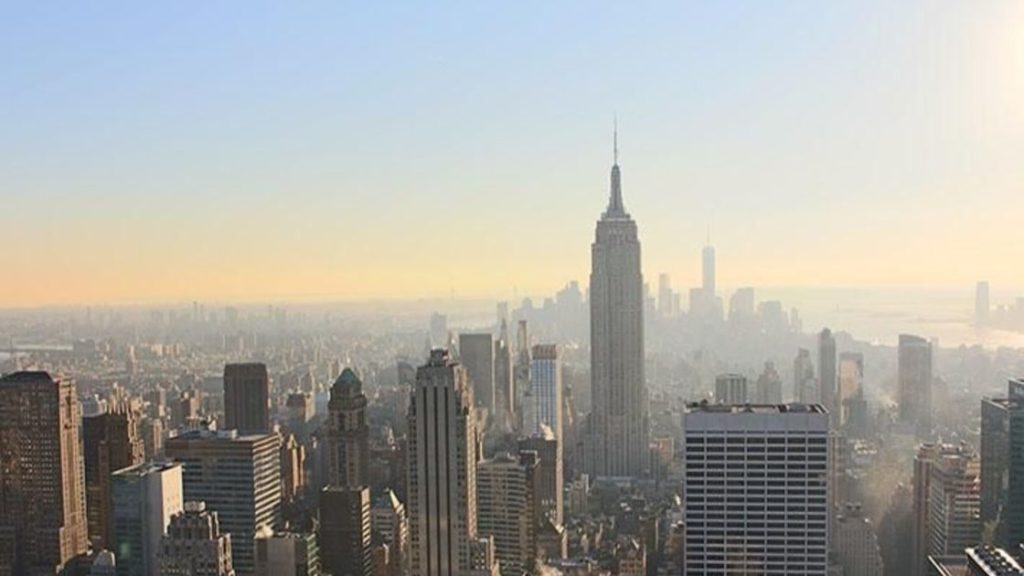
Stagnating Cities and Rotten Apples
It was great to be in New York again, the last time I was there, it was only for 48 hours, coming down from Boston to meet a friend who had come up from DC for the weekend, blasting through town in taxis from party to club to brunch to bar. It was the ideal way to see the place, we had the living room of a friend’s hotel suite and use of a rooftop swimming pool, and everything seemed to happen in a ‘New York Minute’. This visit was a little longer and left me a little more time to contemplate the city.
It is an incredible place, one whose every street corner feels like a paean to bustling industry, the American dream, the great hope of immigrants to the new world, a shining beacon of the West and its fight and victory against the grey conformity of the Soviet alternative. Buildings as tall as mountains line every corner and a busy optimism that seems to urge in its actions the very inscription that is borne by the Lady who guards the harbour. It’s a city whose symbols are world famous, Liberty herself, the Empire state building, Times Square; a city that has been immortalised in song. But all these qualities support the sneaking suspicion as you walk round the place, the niggling feeling that after being the Beacon of the West, and symbol of Victory and the unipolar moment, that this is a city that has started huddling round its own myths, a place that has become reflexive, concentrating on its own legends rather than its impending obsolescence. By concentrating on what made it great, it is, ironically speeding up its own decline, underlining its position as what Steve Grant terms, ‘20th Century-land’. As Amsterdam embodies the 18th and Paris the 19th, so New York may be choosing to become an artefact for the 20th. The leitmotif of New York for the 21st? The destruction of the World Trade Centre buildings, the beginning of a very different reality. Strangely, the city now feels like a pale imitation of Shanghai, which itself was, whether consciously or not, originally aping the Big Apple.
I would argue that London, having had to accept the decline of ‘the West’ much earlier, with the collapse of empire and the inflated sense of ego it had historically provided coupled with the poverty that lay everywhere in the ruins of the Blitz, became a city, albeit through a very difficult half century, that is characterised by change and regeneration. The only place I have been that feels more fluid, more dynamic, is Berlin. Accepting that it was not longer the centre of the world allowed London to become a world class city. I am not saying that this is a process that New York will not go through- the signs of a dialectic around this are there in the Village, along the Highline, (though I would argue not in the hipster hangouts of Williamsburg) but there is a danger that if they concentrate on what was great, they may be in danger of not allowing that evolution. This isn’t helped by residents who move to the city because of these myths, some fictionalised ideal-type of ‘New York ‘and the ‘New Yorker ‘that they become, believing that on arrival their life must be transformed into a Jay McInerney novel (or for that matter, whichever other author and his myth-perpetuation that you have decided to buy into).
From a career perspective, I feel as though it is a developmental gateway through which at some point I must pass- a year or two in an agency out there, but I have other reservations about the city- limited social mobility through the knock-on effect of the lack of both health-care and access to culture (20 dollars for a museum!) and that public monuments are created by private men- Trump, Rockefeller, Whitney, Frick, Vanderbilt. (Yes, I know, Tate, before you call me out on it)
So to remain great, do not simply venerate what was great, those laurels will decay and so will those who rest on them.
In San Francisco, I was talking to a friend who has been involved in architectural projects for Apple. Designing an Apple store in Houston, the company has been adamant that the architects stick to the template for Apple Store designs- the light, airy, signature glass boxes that have characterised their retail experience. In the middle of the Texan desert. The store manager has apparently quipped that for every one iPad on the shop floor, they have three others that they cycle it with because they overheat and have to be swapped out and allowed to fully cool and recharge. It is an unpleasant retail experience and and unpleasant work environment – exactly the opposite end result to that which was intended by the stores design. When the process, rather than the result for the end-user becomes more important, you move from being innovative to being dogmatic. Just as apple’s closed system easy usability made it great, people now expect that usability with a greater level of customisation and use. What made it great is in danger of becoming a liability. But maybe dogma is okay if you are the Catholic Church of technology. Simply perpetuating what made you great in the past is no indicator of future success or relevance, for a city or for a brand.
Category: cities